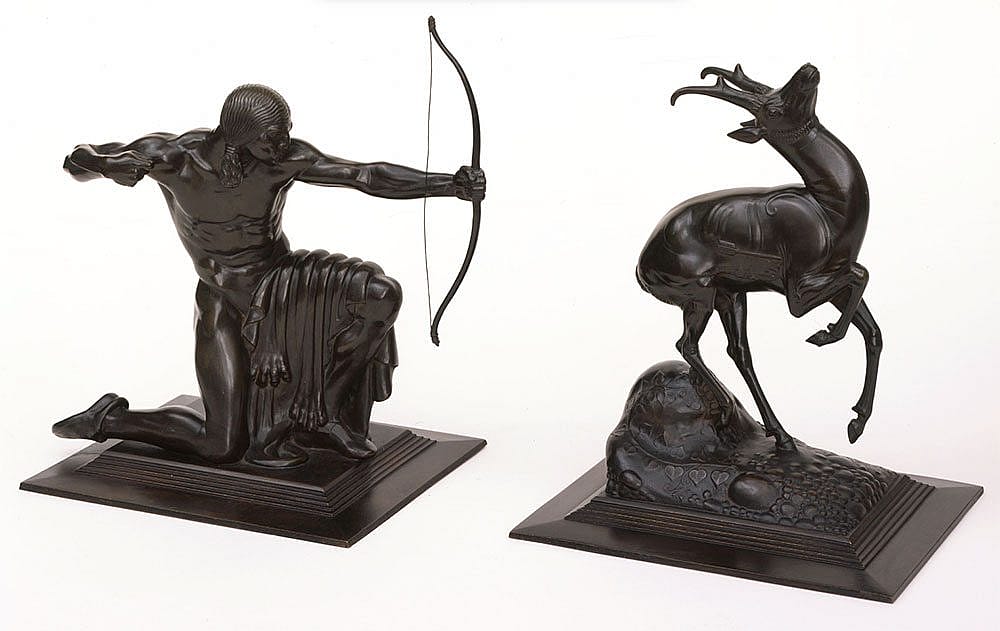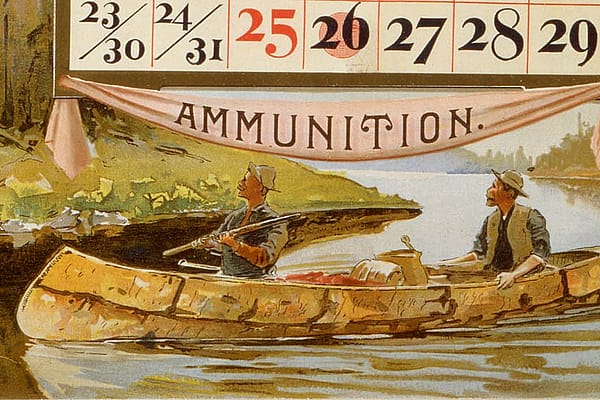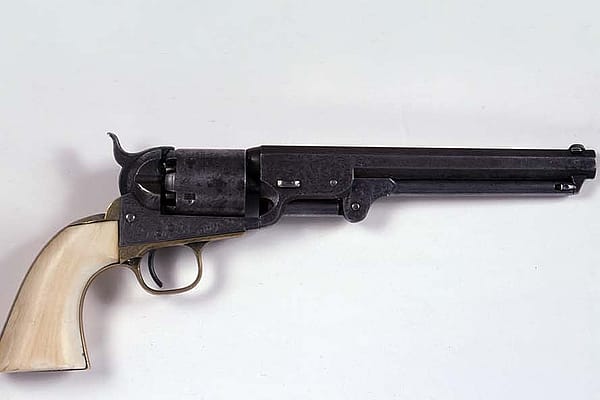
Treasures from Our West: Indian and Pronghorn Antelope by Paul Manship
Originally featured in Points West magazine in Winter 2010
Depicting a hunting scene, Indian and Pronghorn Antelope by Paul Manship stands out from other works of the same subject. The 1914 bronze consists of two separate statuettes: a kneeling Indian who has just shot an arrow from the bow, and a pronghorn antelope. The animal rears backward, struck on its right flank.
Dividing the scene into two separate statuettes creates a timeless moment, capturing in an almost emblematic way the act of hunting with its two protagonists: graceful, powerful man and elegant animal. What makes the depiction of the hunter particularly remarkable is the unique style in which it was rendered.
Rather than a rugged and dynamic illustration typically found in western themes, Manship’s bronze shows a high degree of restraint and refinement. The poses of man and animal show calm and tension simultaneously. Artistic influences derived from European art of the early twentieth century are very apparent. Reminiscent of ancient Greek sculpture, the linear quality and use of form have been understood as forerunners of Art Deco. Thus Manship, who spent several years in Europe, can be considered a precursor of that style.
Paul Manship (1886 – 1966). Indian and Pronghorn Antelope, 1914. Bronze. Gift of the William E. Weiss Memorial Fund and Mr. and Mrs. Richard J. Schwartz. 3.89A/B
Post 103
Written By
Nancy McClure
Nancy now does Grants & Foundations Relations for the Center of the West's Development Department, but was formerly the Content Producer for the Center's Public Relations Department, where her work included writing and updating website content, publicizing events, copy editing, working with images, and producing the e-newsletter Western Wire. Her current job is seeking and applying for funding from government grants and private foundations. In her spare time, Nancy enjoys photography, reading, flower gardening, and playing the flute.










